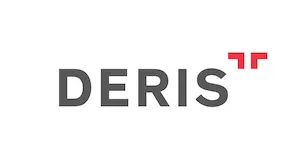This article is correct as of 12th November 2019
The Supreme Court Assembly of Civil Chambers rendered a decision on the right to be forgotten in 2015, before the enactment of any legislation on Personal Data Protection. Turkey’s Data Protection Law is based on the Directive 95/46/EC and does not have any regulations on the right to be forgotten.
However, the case law acknowledges the right to be forgotten as a personal right and a precedent decision has been developed on the right to be forgotten in the decision of the Supreme Court dated June 17, 2015 (The Decision of the Supreme Court on the Right to be Forgotten numbered 2014/4-56 E. and 2015/1679 K. dated 17.06.2015).
In the dispute subject to the decision in question, the plaintiff is a victim of sexual assault which was committed 4 years ago. The victim had filed a legal action against the assault back at that time and a decision had been rendered for the crime of assault. However, the subject judgment was published in a criminal law book with the name of the victim without a pseudonym. The plaintiff, who was the victim in the criminal case, claimed that having her name used without a pseudonym in a criminal law book constituted an attack against her personal rights and requested compensation.
The parties appealed the decision of the First Instance Court which partially accepted the court action. The 4th Civil Chamber of the Supreme Court decided that such publication does not constitute an attack on personal rights since the book from which the plaintiff claims her name to be removed is a treatise and the name of the plaintiff could be used without a pseudonym within the scope of freedom of scientific study which prevails over personal interests.
As a result of the insisting decision of the First Instance against the decision of reversal by the 4th Civil Chamber of the Supreme Court, the case was referred to the Supreme Court Assembly of Civil Chambers.
The Supreme Court Assembly of Civil Chambers outlines that the border between the right of protection of personal data and personal rights and the freedom of science and art studies should be evaluated carefully.
The Chamber considered the protection of personal data as closely related to human rights and stated that disclosing personal data may, initially, violate privacy and also offend various other associated rights.
The Chamber defines the right to be forgotten as a right to request the erasure and the prevention of the transmission of personal data which is not preferred to be known by third parties and as a right to request the data to be forgotten which may be related to a negative past instance stored in a digital memory.
The description of the right to be forgotten in the decision is: “The right to be forgotten provides an individual with the right of “controlling his/her past”, “requesting certain matters to be erased from his/her past or not be recalled”, while vesting obligations on the addressee of the data to take measures for avoiding the recall of the information of the individual or to prevent the use of such information by third parties. It is accepted that such right provides the right to compel third parties to erase the content related to the individual such as photos and internet blogs and the right to demand the removal of information with respect to past punishments or information and photos which may cause unfavorable comments on the individual. On the other hand, in order to protect such right, necessary measures for the impossible recall of the individuals’ pasts in respect of certain aspects should be taken.”
As can be seen, the right to be forgotten is specified in detail in the aforementioned decision and it is recognized that the right to be forgotten is strictly associated with personhood.
Consequently, it is concluded in the judgment that quoting the name of the individual in the book without a pseudonym violates the right to be forgotten as well as the privacy of the individual.
It is also noted in the judgment that the data subject to the right to be forgotten are not only data in the digital media but also data in printed publications.



